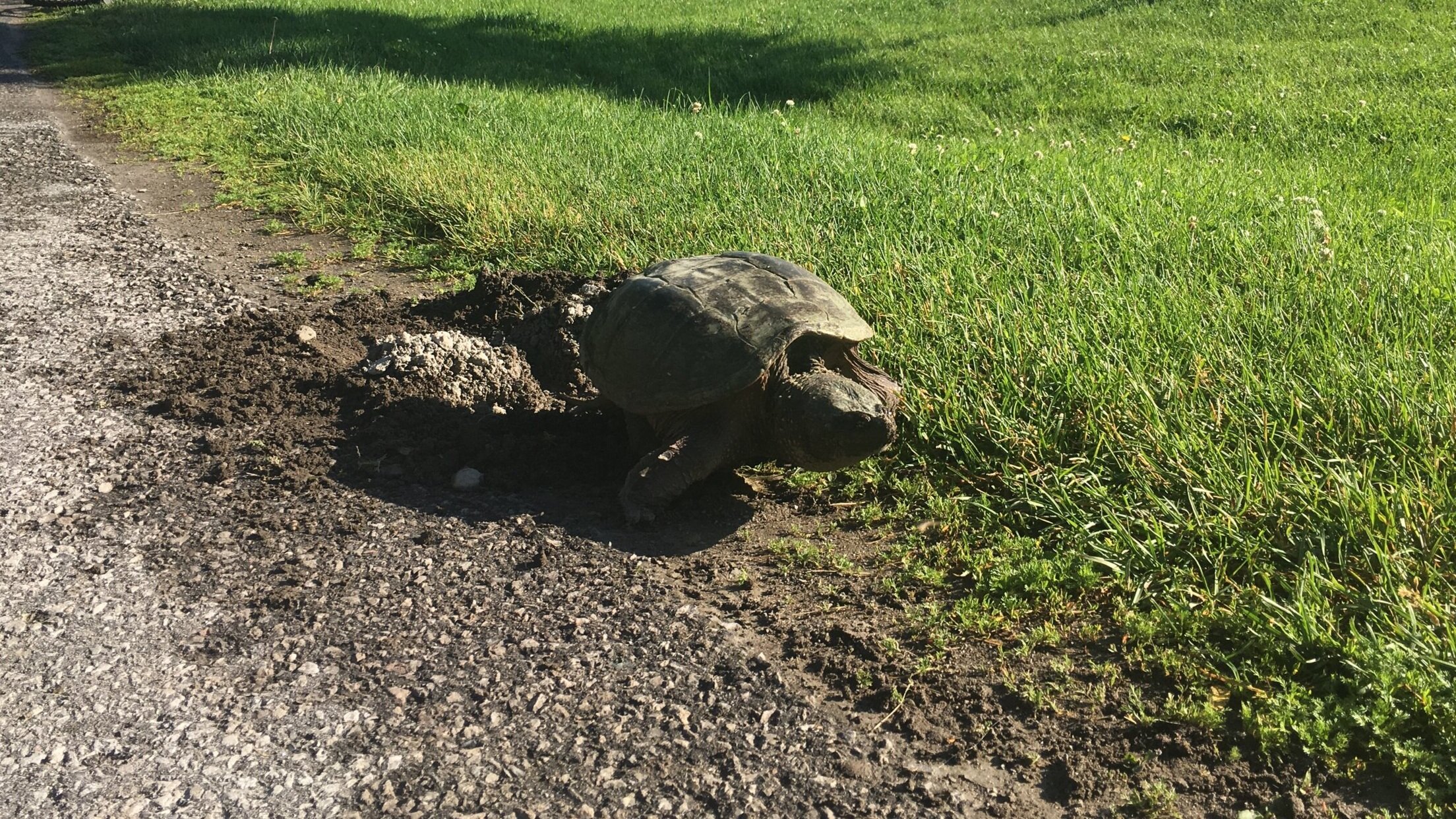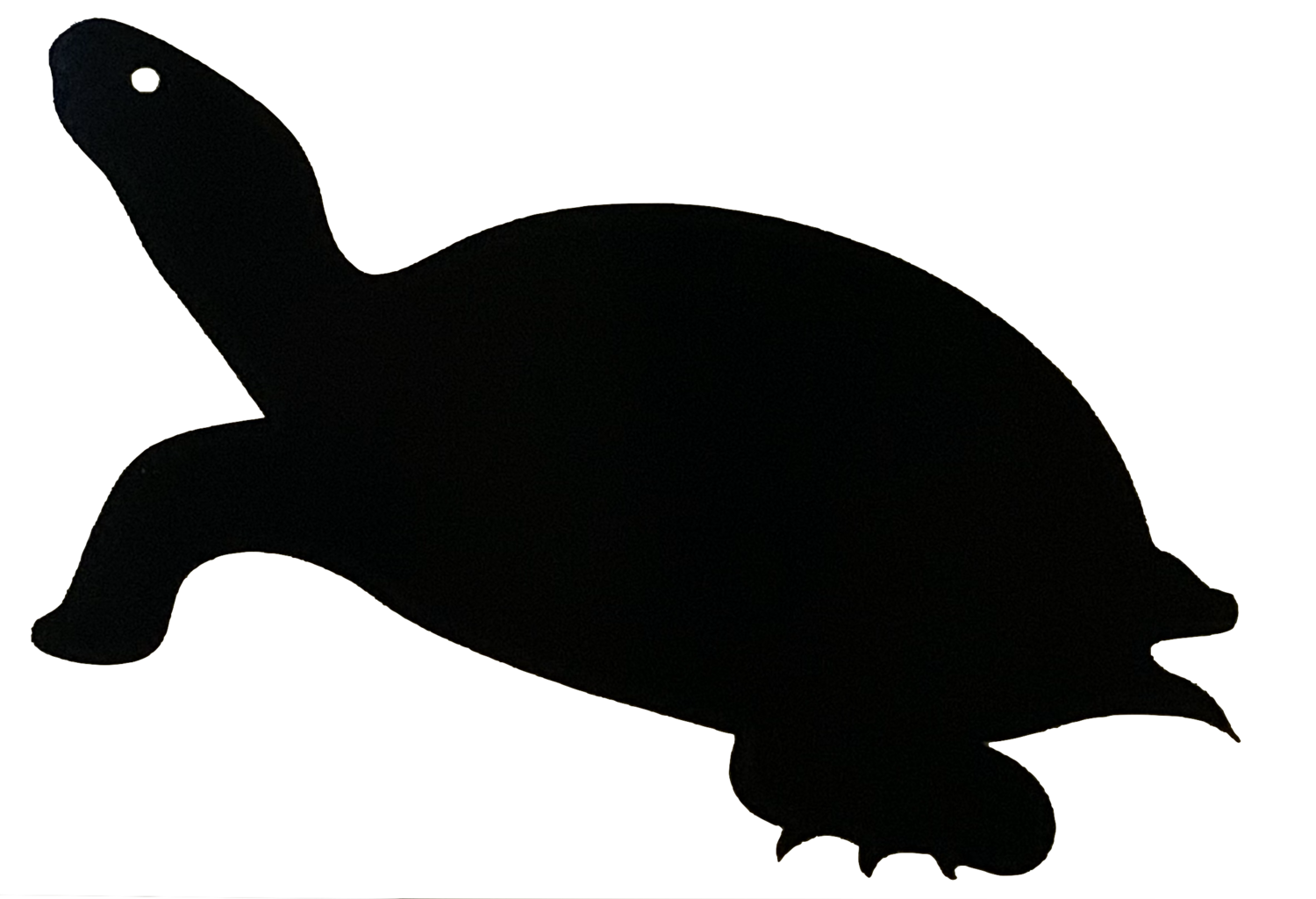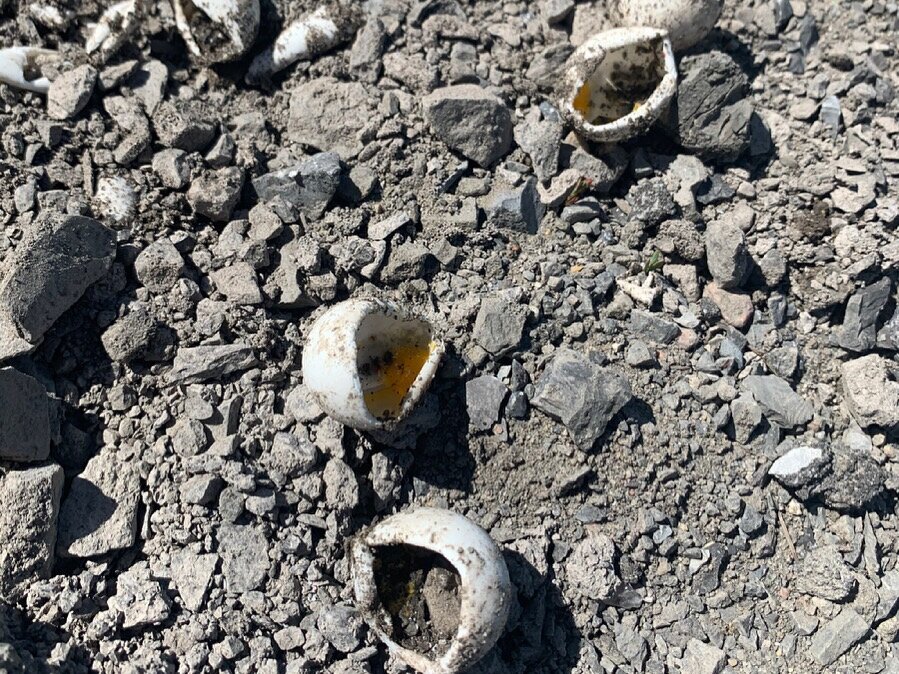Turtle Nest Protection Program

About the Program
The turtle nest protection program launched in 2019 and focuses on providing nest protectors to the public so they can take action and help turtles near their homes! As of the end of 2021, more than 400 nest protectors have been sold in the Kingston Area.
Nest protectors are available to the public at the Potter’s Nurseries at 690 Golden Mile Rd, Kingston, ON K7M 6K6. Each nest protector can be purchased at cost (for the materials).
Why should you protect turtle nests?
Turtle nests are regularly destroyed by predators like raccoons, otters, foxes, and crows. In fact, less than 1% of eggs survive to maturity. As a result, turtle nests near human populations need your help and protection!
By installing a nest protector, you can help more eggs survive!
Respect Nesting Turtles
A nesting turtle is a beautiful thing to behold; however, we need to respect the turtle’s privacy and observe any nesting female from a distance of at least 10 meters.
Nesting turtles can be easily frightened. If a female is frightened regularly, or in a way that causes her stress, she may give up on laying her eggs. This may result in her retaining her eggs (which could be dangerous to her health and even cause death) or laying her eggs later in water (where they will not survive).
You’ve found a Nesting Turtle, Now What?
After the female turtle has left (the nesting process can take between 1-3 hours), you can protect the nest using a nest protector. If you do not have an approved Nest Protector immediately available, you can temporarily use a BBQ rack weighted down with a large rock or brick to deter predators. You can then replace the temporary protection with a Turtles Kingston nest protector, or you can make your own following the design from Turtles Kingston.
Keep the nest protector over the nest until the hatchlings emerge. Beyond helping to protect their nest, the hatchlings will not need any more help. They will easily be able to dig their way out and find their way to the closest water, where they will start their lives. If the hatchlings do not emerge in late summer / early autumn do not worry! They may be painted or map turtle hatchlings, which often overwinter in the nests and emerge in the spring. For these turtle nests, keep the nest protector on until the hatchlings emerge. However, if the nest protector is on public land you will have to remove it for winter (safety considerations).
It is important to protect the nest as soon as possible, since most predation occurs within the first couple of days after nesting! However, predation can occur at any point in time, so leave those nest protectors on!
Keep in mind that you must obtain permission to place a nest protector anywhere but your own property. You should also always include your name and contact information on the cage (such as in a zip top bag).
Never dig up or alter a turtle nest. Not only is it illegal, but you could injure the turtles!
How to install a Nest Protector
After the female turtle has left, you can protect nests on private property as follows:
Centre the nesting site under the nest protector (look for damp soil)
Hammer one metal spike into each inside corner of the protector, making sure the spikes do not go into the turtle nest
Ensure the nest protector does not block sun or rain and all exit holes are clear (i.e. do not place anything on top of the nest protector)
Install a safety flag beside the protector if near a driveway/path
Leave the nest protector in place until the hatchlings emerge - this could be in the autumn (August - October) or the following spring (~May)

Nest protection on Public Property and Roads
If you are looking to protect a turtle nest on public property you will need to obtain written permission from the landowner to place a nest protector. You can first place your turtle nest protector, ensuring that it is adequately off any roads / shoulders or trails, that it has a reflective identifier and that it is labelled with your contact information. Once the turtle nest protector is in place, email a photo of the nest protector with a detailed description of the location to the landowner.
If you are requested to remove the nest protector do so. The small amount of time the nest has already been protected will help to increase the hatchlings’ survival rate. If you are not requested to remove the protector, then you can leave the nest protector until autumn, but for safety reasons, be sure to remove it before winter!
Please follow these procedures for protecting nests on public property within the City of Kingston
Nest protectors can be placed behind the guardrail to avoid the pull off section of the road
Nest protectors can be placed on the roadside at the edge of the shoulder in the grassy area, no more than 75 mm onto the gravel of the road shoulder
Nest protectors cannot be placed entirely on the gravel of the roadside as this must be kept clear for motorists as a safety pull off zone
Nest protectors on roadsides must have a reflective laneway marker to indicate their location
Use an approved nest protector design (such as that suggested by Turtles Kingston which is based off the Canadian Wildlife Federation design)
All nest protectors must have openings that allow hatchlings to exit on their own
You must include a waterproof label (i.e. in a ziptop bag) that identified the nest protector and provides your contact information
Email a photo of the nest protector with a detailed description of the location to the Public Works Department of the City of Kingston: contactus@cityofkingston.ca (or by phone: 613-546-0000).
We recommend you check the nest protectors on a regular basis to ensure it has not been vandalized or moved and also to check for emerging hatchlings that may need your assistance to get to their water source once hatched. Do not worry if you don’t see any hatchlings emerge, they may be Midland Painted or Northern Map turtles who commonly stay in the nest until the spring.
Be aware that these instructions apply for placing nest protectors in the City of Kingston as we have worked with the City to create this procedure. If you live outside Kingston, procedures may differ. Please contact your local municipality to discuss appropriate procedures.
Other Facts and Answers
Never disturb or alter a turtle nest or the eggs - it is illegal
All nest protectors must be notched to allow hatchings to exit. This exit must be at least 2” by 2”.
Never place anything over the center of the nest protector as you want natural sun and rain to access the nest location.
Recent research recommends that nest protectors remain in place for the duration of incubation (60-90 days) which could be from the end of May to the end of September.
If you notice that a predator has tried to move the nest, you can place a flat brick or stone on the corner of the nest. These must be flat, so they don’t roll into the center of the mesh.
You must always obtain permission to put a nest protector on private property, road right-of ways, and other publicly or privately managed areas.
Any nest protector on public / private lands needs to be built to certain standards, similar to Turtles Kingston nest protectors.
Predators are attracted to turtle nests by both smell and sound. It is the smell of the fluids released by the female with the eggs, to keep them moist, that can attract predators within the first few days. Hatchlings make little noises while developing which can also be heard by predators during the entire incubation period.






